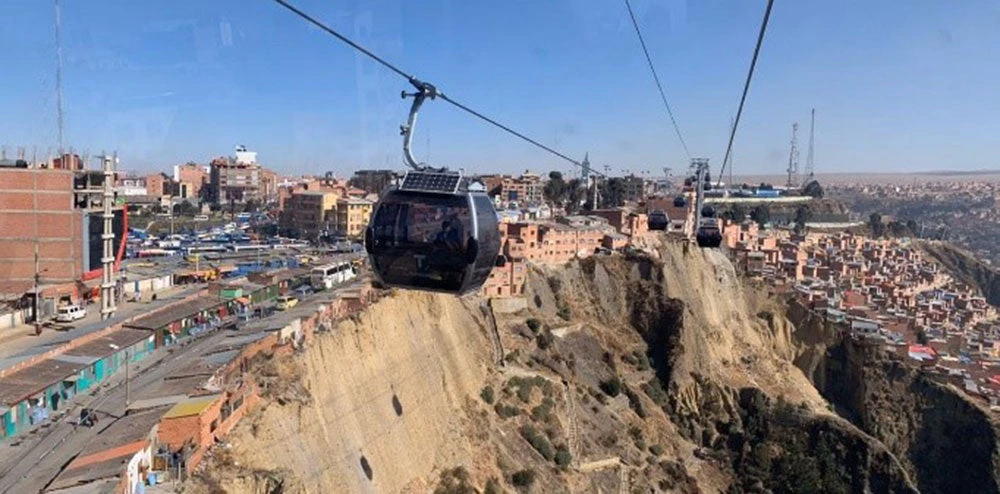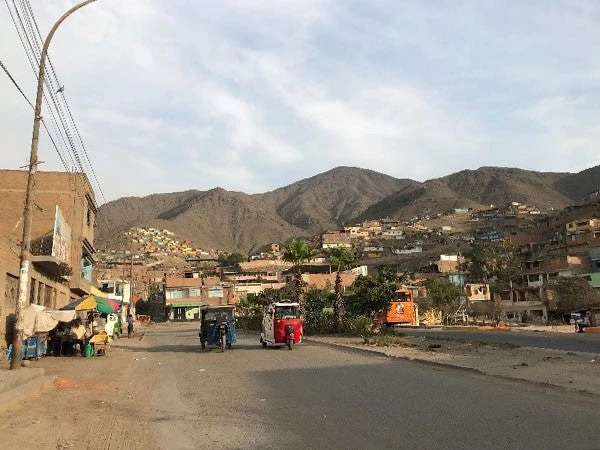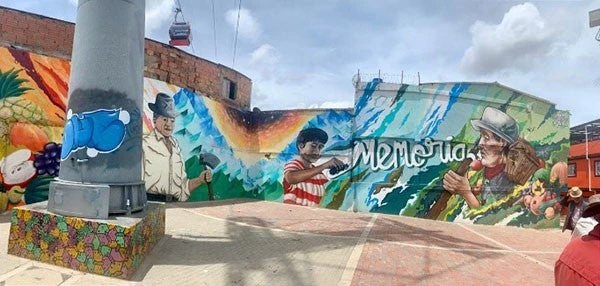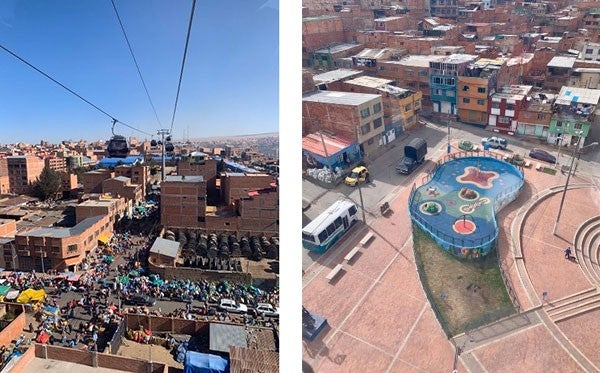 Implementación de infraestructura de teleféricos en zonas de fuerte desnivel. MiTeleférico, La Paz.
Implementación de infraestructura de teleféricos en zonas de fuerte desnivel. MiTeleférico, La Paz.
Urban cable cars have proven to reduce travel times to commuters, at the same time providing commuters with safe, reliable transport with views of the city. In Latin America, customers of cable car lines in cities, including Medellin, Bogota, La Paz, Santiago) describe it as a quick, affordable, and reliable travel mode that provides beautiful views of the communities and attracts many tourists.
In Medellín, for instance, Metrocable was designed to improve community facilities and increase public spaces. Residents were involved in developing an urban strategy that eventually transformed their lives and improved their safety conditions.
In Peru, the urban cable car project in the northern districts of Lima Metropolitana (LMA): San Juan de Lurigancho (SJL) and La Independencia, is part of the cable car accessibility program launched in 2013.
The project is still under preparation and has received technical support from the World Bank since 2018. The system implementation will help to address some of the accessibility, inequality, and unsustainability problems of transport and urban planning.
The COVID-19 pandemic has increased social awareness and emphasized the need to design individual and health-centered spaces . In this context, cable cars and their urban projects can provide the flexibility and adaptability needed to improve the quality of life, transport and public spaces, and reduce overcrowding and inequality in districts such as SJL or Independencia.
Beyond travel time savings, the public space interventions associated with SJL cable car will have a positive economic, social, environmental, and urban impact for more than 1.2 million inhabitants:
- Economic impact: the cable car project requires a sustainable business model that ensures the service affordability and inclusiveness for the entire community. With 26.1% of SJL population living in poverty and 7.8% in extreme poverty, the implementation of an inclusive and financially viable service is crucial. In the short term, this aerial system and its urban interventions will improve transport services and reactivate the economy (post-COVID-19) by hiring local workers. In the long run, these improvements will progressively increase commercial activity, attract private investment and reduce violence and sexual harassment in public space.
- Social impact: Participatory urban planning in the cable car's area of influence will empower the community, reduce feelings of insecurity, and ensure infrastructure integration. The cable car has an essential social responsibility in districts with a high level of violence and crime, especially in SJL, which accounts for 12% of the total number of reported crimes in the LMA. Lima could build on and replicate community participation experiences, such as the graffiti circuit of Transmicable in Bogotá or the children's drawing contests for MiTeleferico in la Paz.
- Environmental impact: the cable car project implementation will reduce greenhouse gas emissions and improve environmental conditions and green areas in the districts. The districts of SJL and La Independencia are among the most polluted in the LMA (Ministry of Environment – Peru). The districts' steep terrain favors the concentration of harmful particles in the air. A clean means of transport such as the cable car, including the redistribution of the current motorcycle taxi service, will alleviate the pollution. Besides, the cable car environmental management plan calls for an increase in vegetation in the districts that will stabilize the slopes and promote climate resilience.
- Urban impact: critical aspects of the cable car project are the urban improvements and facility construction in a new post-COVID reality. As mitigation measures for the new post-COVID stage, Lima Como Vamos is working on initiatives ranging from #QuédateEnTuCasa (stay-at-home) to #QuédateEnTuBarrio (stay at your neighborhood). Urban plans in the cable car's area of influence could be designed to focus on the community and their "new normal", strengthen public services, reformulate design parameters for social housing and expand the open space area per inhabitant. The implementation of these projects is the only way to facilitate pedestrian traffic and improve safety, hygiene, and habitability conditions, especially for women and people with disabilities.
Despite public budget constraints due to the COVID-19 crisis, infrastructure projects may be devised as counter-cyclical measures that support economic reactivation and job creation in priority areas, such as the northern cone of Lima.
Just as other modes of public transport under operation, cable cars are an essential transport service , that will have to operate under the new occupation regulations with financial sustainability criteria.
This "new normal" offers a unique opportunity to critical thinking and promote advanced urban development and transport models for the post-COVID era. In this context, cable cars open up a window of opportunity for urban transport in the city.







Join the Conversation